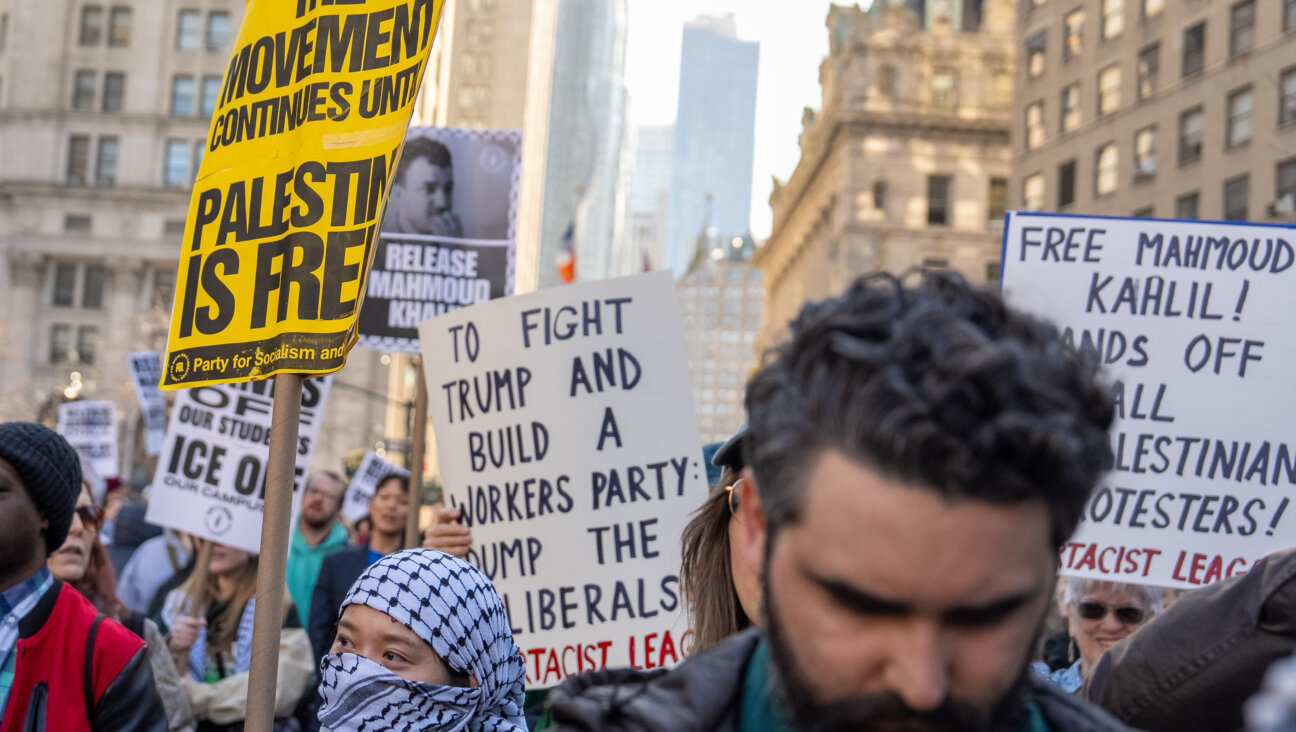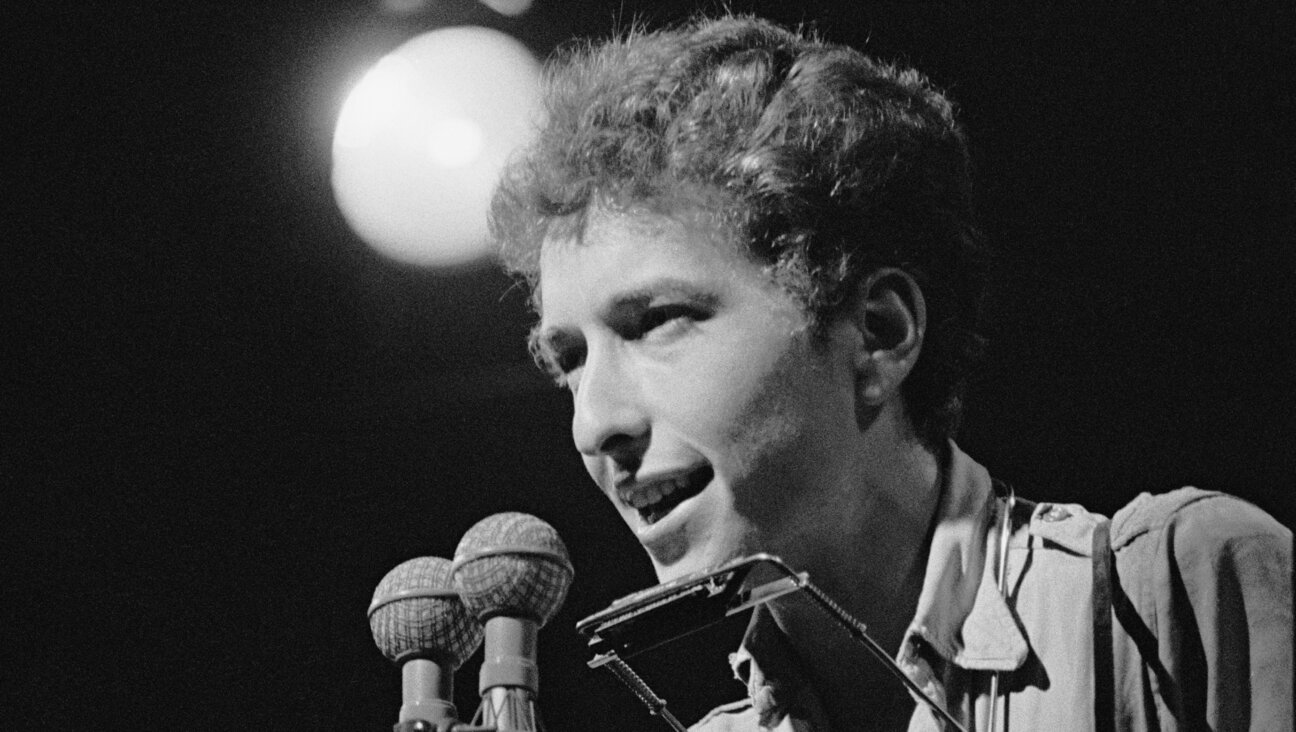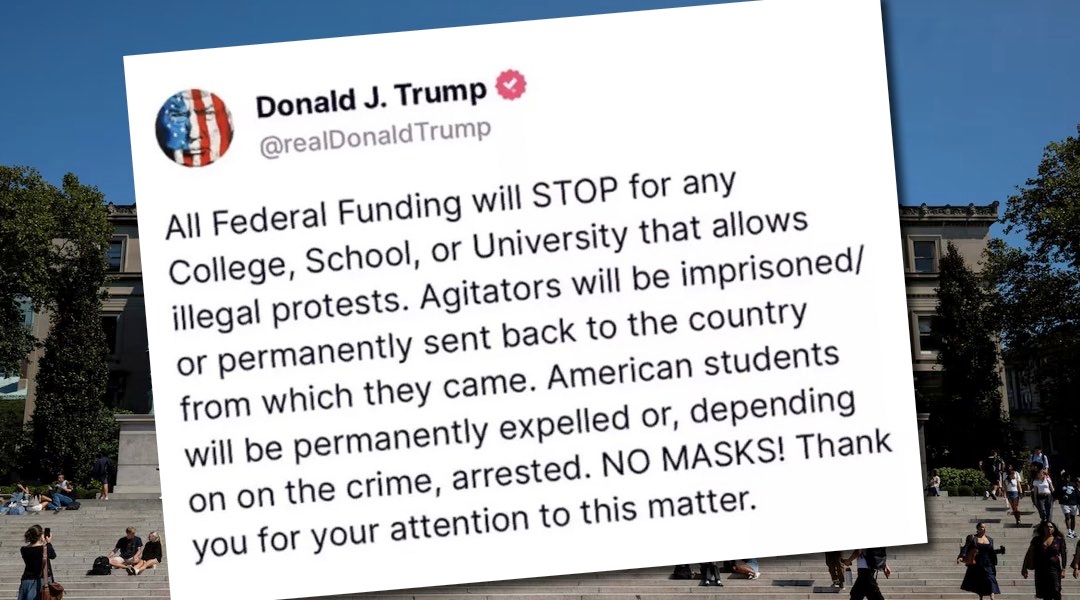Bearing Gifts, Restoring the Temple Amid the Ruins Left by Katrina
By some standards, Beth Israel synagogue fared well last summer when Hurricane Katrina swept through Biloxi, Miss. Several of the congregation’s 60 families lost their homes, and about a tenth are leaving town. The temple, a small building on Camellia Street with a curving brick facade, suffered severe roof and water damage. Still, the sanctuary is intact and the Torah scrolls were saved.
Of the 25 people who gathered for services on a Friday night in late February, singing traditional melodies tinged with Southern accents, a number described themselves as lucky, if only to have their lives and their homes — or at least a FEMA trailer.
Beth Israel is the only synagogue along the Gulf Coast between Mobile, Ala., and New Orleans, and the only Conservative congregation in the state of Mississippi. About half the members live in Biloxi, the state’s fourth largest city: population (pre-Katrina) some 47,000. The rest are scattered, a handful per town, across a 45-mile radius.
It’s an area where Jews traditionally have had a low profile. Lately, though, because of its location on the hurricane-devastated Gulf Coast, it has become a destination of choice for national charities,
including Jewish ones. It has been a learning experience for both sides.
Delegations from United Jewish Communities, B’nai B’rith International, Hillel and UJA-Federation of New York, as well as assorted Jewish news organizations, have dropped by since Katrina hit in August 2005. Beth Israel is now in the spotlight.
“This is redefining the relationship of Jews to Mississippi,” said the president of Beth Israel, Stephen Richer, who is executive director of the Mississippi Gulf Coast Convention and Visitors Bureau. “That’s just lovely.”
Being Jewish in Mississippi is not the same as being Jewish elsewhere, and Biloxi is different from the rest of Mississippi. Unlike older communities in Jackson or Hattiesburg, Beth Israel goes back only decades and not centuries. To the heavily church-going population of the town, Jewish services are a source of curiosity. It’s not uncommon for visitors to sit in and ask questions.
“There’s a lot of churches. I mean a lot of churches,” said Richer, who grew up in New Jersey. “People are really proud of the fact that they practice their faith. As a result, they also respect people who practice his or her faith, whatever it is.”
Non-Jewish attendees were more numerous than usual on February 18, when Kati Perry celebrated her bat mitzvah. Three quarters of those in attendance were Catholic, including a priest, since Kati attends a Catholic school in Pascagoula.
Kati’s mother, Paula, said her two children attend Catholic school because it offers the best education in the Pascagoula area, where they are one of only two Jewish families. “I think the only times they’ve ever been uncomfortable is when they kneel in Mass,” she said. In a special concession from the school, “at communion my kids now get blessed without the sign of the cross. I do, too.”
The service was held in the Ocean Springs Community Center, a wide hall adorned with dazzling pastel murals of peacocks, flowers and sea life. The rabbi, Debra Kassoff of Jackson’s Institute of Southern Jewish Life, drove down for the celebration, since Beth Israel has no rabbi of its own.
To the members of Beth Israel, their first bat mitzvah since Katrina (another had been relocated to the Virgin Islands) was a sign that while life here never will be what it was, people have not given up.
“We’re about a block from the river,” said Paula Perry. “We’re just very blessed that the water came up but we didn’t have any water damage.”
Not everyone was so lucky. Her brother’s family is housed in a trailer. Even the caterer lost her home.
Judging by news accounts, Biloxi is way ahead of its Gulf neighbors in clearing away Katrina’s destruction. Still, there’s nothing cheerful or uplifting about the state of the city six months afterward — except, perhaps, its oddly cheerful citizens.
From the airplane, whole forests can be seen, mashed sideways. Wrecked shops line the road into Gulfport, which has a downtown only in name now. The first few streets in from the beach are all but gone, just piles of wreckage or vacant lots.
Some locals call this “the other Gulf Coast,” a charged reference to the national attention showered on New Orleans, which escaped the worst of the hurricane itself and was devastated by flooding afterward. This is where the hurricane itself hit.
US 90, the four-lane highway that runs along the beach from Gulfport east to Biloxi, is a grim gallery of vanished homes, twisted metal, concrete skeletons, signs without fast-food joints and parking lots without motels. The beach itself is littered with bits of boardwalk, signs and crushed pavement. Tree branches stick out of the gray Gulf waters 100 yards offshore.
In downtown Biloxi, which has been dominated by casinos since the 1990s, two of the main ones are up and running. Inside the Isle of Capri, a massive waterfront hotel, people were lined up out the door for the buffet. You can’t play blackjack for less than $20 a hand. Some parts of town don’t look so bad. Roofs have been repaired and windows boarded. But with a quarter to a third of Biloxi’s population gone, even neighborhoods that are occupied feel empty. It makes it all the more eerie to see cars everywhere, snaking through traffic lights that blink yellow or red, past wrecked condos, abandoned hospitals and obliterated, blocked-off side streets.
The casinos have gotten first claim on work crews, who saw and hammer from dawn to dusk repairing the high-rises that were sheared away by wind and water. An occasional crew is seen putting a house or business back together.
The slack has been taken up by a legion of volunteers, brought in primarily through church-affiliated relief groups, said Roberta Avila, a member of Beth Israel. Avila is executive director of the Mississippi Coast Interfaith Disaster Task Force, which helps coordinate the volunteers’ work.
When representatives of Jewish groups from New York and Los Angeles first visited Beth Israel after the storm, they expected their role would be to raise money to pay for specific projects. However, they learned that the congregation’s immediate needs had been largely met.
Instead, Richer sent them west to the devastated communities of Pass Christian, Waveland and Bay St. Louis, where there are no Jewish communities. The Jewish groups, traditionally focused on helping other Jews, found themselves joining the general disaster relief effort and working directly with community leaders, county officials and congressional representatives — “people who aren’t used to meeting with key Jewish leaders on a national level,” Richer said, “because there’s not a lot of key Jewish leaders down here.”
“People really responded everywhere,” said Cheryl Fishbein, chair of the New York UJA-Federation hurricane relief committee, in a telephone interview. “In some places it was like, ‘Holy Jesus, the Jews are coming.’ It’s fabulous.”
Pledges totaling several million dollars have come from UJA-Federation, B’nai B’rith, the Simon Wiesenthal Center and others, plus $100,000 worth of cosmetics from the Lauder family. There’s even been an avalanche of blankets, sweaters, caps and gloves donated by 350,000 knitting enthusiasts who subscribe to a newsletter put out by the Lion Brand Yarn Company of Carlstadt, N.J.
Beth Israel’s needs are more complex for the time being. Services are being held in a Methodist church while the future of the Camellia Street building is under discussion. Predictably, there’s a nearly even split between those who want to repair their home of three decades and those who want to build farther inland.
“I hate to move,” said congregant Milton Grishman, whose home was inches above the final crest of Katrina’s waters.
His father, Moody, standing nearby, chided his son — between wisecracks about the residents of the Methodist nursing home where he’s lived since the storm — for not yet fixing the synagogue’s broken windows.
“It’s tough to get any kind of work done,” Milton told him.
Richer speaks of an imminent mental health crisis, when families that have held out hope for government assistance or insurance settlements finally have to face the reality of being on their own. And everyone mourns the more permanent losses: the 19th-century beachfront homes that have been bulldozed and are likely to be replaced with condos, the elderly residents who have taken their memories with them to live with children in far-off states, the refashioning of Biloxi into whatever it will be.
From the commotion in Ocean Springs as Kati entered Jewish adulthood, you never would know that the majority of people there had either lost their homes or just returned to them.
“We needed a simcha, we really did,” Paula Perry said, looking around happily as her guests noshed on hors d’oeuvres, chatted loudly and gazed at the murals depicting an idealized version of life along an oddly tranquil seacoast.
A message from our Publisher & CEO Rachel Fishman Feddersen

I hope you appreciated this article. Before you go, I’d like to ask you to please support the Forward’s award-winning, nonprofit journalism so that we can be prepared for whatever news 2025 brings.
At a time when other newsrooms are closing or cutting back, the Forward has removed its paywall and invested additional resources to report on the ground from Israel and around the U.S. on the impact of the war, rising antisemitism and polarized discourse.
Readers like you make it all possible. Support our work by becoming a Forward Member and connect with our journalism and your community.
— Rachel Fishman Feddersen, Publisher and CEO



























